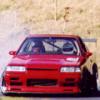Is It True Heavy Pressureplates Can Hurt The
Announcements
-
Similar Content
-
Latest Posts
-
I get that taking off the head is best but that's a bit much for "just" valve seals. I was just under the impression that one would be able to rotate to TDC and be able to temporarily drop the valve without losing it and effectively having to remove the head to then recover it. I never knew people actually pushed rope into the cylinder to do valve seals hahaha So just to confirm, just going to TDC will not work? In that case I know when I do valve seals I'll maybe just remove the head and do some other things while I'm there, or just wait until I do an engine build.
-
The old approach was to fill the cylinder/chamber with a length of rope pushed in through the sparkplug hole. The new approach is to connect compressed air to the sparkplug hole and fill it with enough pressure to push the valves up. Doing either of these things with the head on and the engine in the car is a lot less pleasant than doing it properly.
-
Can't you put the pistons to TDC and then do the valve seals? Or will the drop down too far to pull them back up?
-
One thing I can tell you is, do it properly the first time. If you encounter unexpected problems just let the car sit for a week or two if you have to get some other parts or figure stuff out. I'd have said go and use as many OEM parts as possible but since you want to change the turbo later on a custom kit is probably the better choice. Since I have no experience with RB25 just compare parts diagrams and images before buying a line kit and it should be easy to see if it has everything you need. Amayama has very good parts diagrams and part number lists, that is what I used a bunch to figure out what I might need. And don't forget to plan ahead and possibly renew other stuff that's easy to get to while you're in there doing the turbo lines. Happy wrenching
-
Update 4: Hi all, good news. Engine is running and all the gaskets and seals seem to be working as intended. No leaks so far, even the JB Weld seems to hold. I flushed out the old coolant a few times and put in fresh coolant, not Nissan stuff, I decided to try the Ravenol Protect FL22, they claim it works for a wide variety of JDM cars and the opinions on it by some people were pretty good. And it has the nice poison green color! And man am I glad I bought a coolant system tester earlier this year, vacuum filling works wonders on this engine. I can definitely recommend this to anyone still doing it the old school way. All you need is compressed air supply. Will have to do a small test drive as soon as I can, I removed the gauge cluster again as the tacho needle was still bouncing around a bit but it was much better than before already. I also found some cracks on all 4 tires inner and outer sidewalls. Apparently these tires should 't be parked on for extended periods or be kept under 0 degrees during storage, which I did not know. Clearly the previous owner didn't look into those details either, he probably bought them just cause they are cool semi-slicks. I'm just wondering how tf I am supposed to reach 30-80 degree tire temperatures on the public road consistenly, these tires were never going to work for my use case. I'll probably order Continental SportContact7 ones as these are the best allround summer tire available right now and I don't think I'll need anything crazier for now. Do let me know if you have experience with various tires and which ones you recommend.
-





Recommended Posts
Create an account or sign in to comment
You need to be a member in order to leave a comment
Create an account
Sign up for a new account in our community. It's easy!
Register a new accountSign in
Already have an account? Sign in here.
Sign In Now